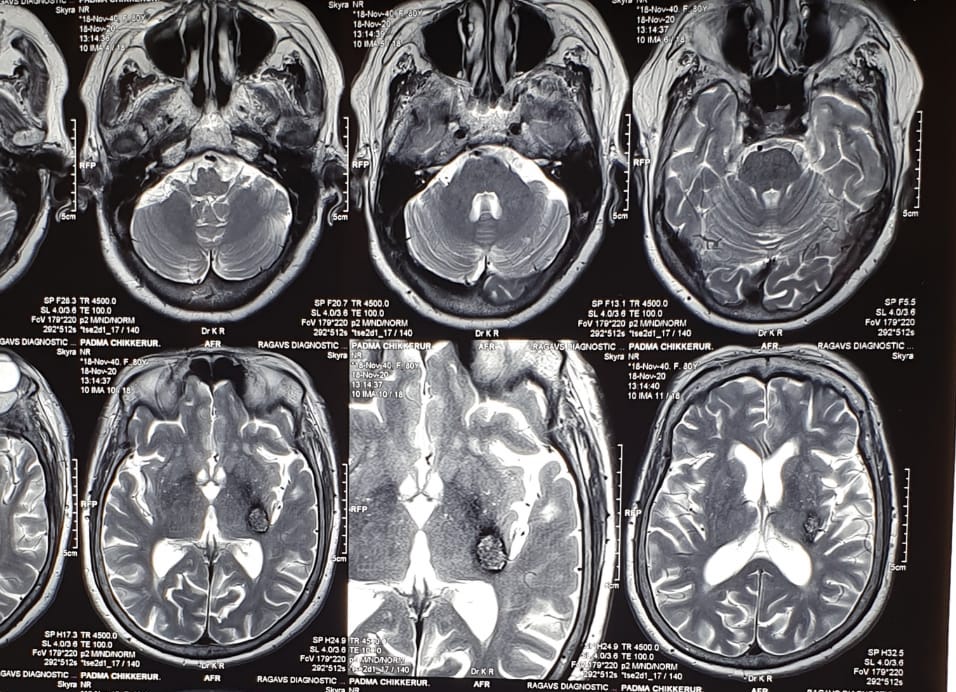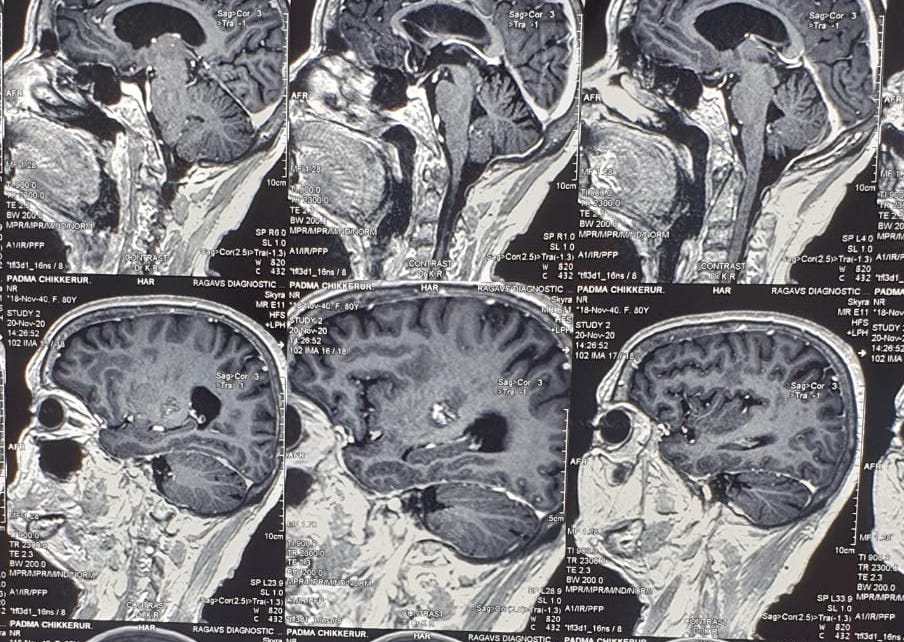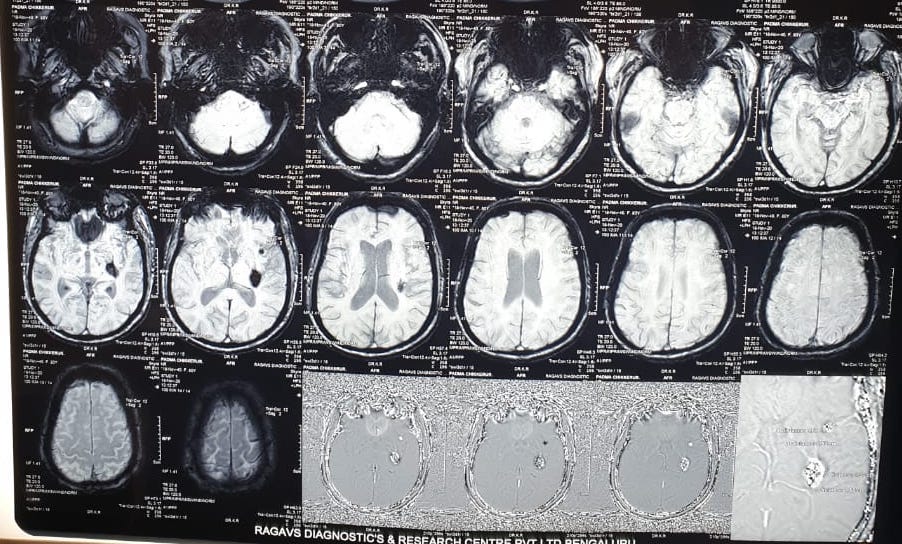Objective: Freezing of gait(FOG) is defined as a brief, episodic absence or marked reduction of forward progression of the feet despite the intention to walk. Here we report a lady who presented with acute onset FOG. Magnetic Resonance Imaging(MRI) Brain showed a Left Posterior Limb of Internal Capsule Cavernoma with bleed. She was treated with Venlaflaxine and Dalfampridine and reported marked improvement with these medications over 6 weeks
Background: The pathophysiology behind FOG is largely unknown. Acute onset FOG after Cerebrovascular(CVD) event is uncommon. It maybe seen after hemorrhagic and less commonly ischemic strokes affecting the basal ganglia. FOG secondary to CVD outside the basal ganglia is extremely rare. Since the pathophysiology is largely unknown the treatment options are few and include Levodopa, Amantadine, MAO – B inhibitors, L – Threo DOPS, BOTOX, antidepressants and methylphenidate, with limited results
Method: : 80 year old hypertensive lady presented with Acute onset FOG since one day. There was no history of long standing rigidity, bradykinesia, gait imbalance or similar illness in the past. She scored 12 on FOG questionnaire. MRI Brain (plain) showed a Left Posterior Limb of Internal Capsule Cavernoma with bleed. She was treated with Venlaflaxine 37.5mg twice daily and Dalfampridine 10mg twice daily for a period of 6 weeks. Her follow up FOG questionnaire score improved to 3
Results: The predominant symptoms of FOG with ability to use external cues and initiate walk suggests pathology in Supplementary Motor Area-Basal Ganglia -Thalamus-Motor Cortex network, which is called Ignition apraxia. The lesion in this patient disrupted the above network, resulting in FOG. Neurochemicals involved in gait are Dopamine, Noradrenaline, Serotonin, Acetylcholine. Reduced Frontal and Thalamic Noradrenergic tone critically tips this network into insufficiency and Precipitates Freezing. Venlaflaxine, an Inhibitor of Norepinephine, Serotonin, and Dopamine reuptake and dalfampridine, a blocker of the Potassium v1 channels, decrease reuptake and potentiate release of these neurotransmitters at cortical and subcortical levels, respectively.
Conclusion: This case is intriguing in two aspects – 1) The patient suffers FOG inspite of the lesion being outside the basal ganglia which is extremely rare and 2) Dramatic improvement observed to two drugs which she was prescribed.
References: 1.Liston R, Mickelborough J, Bene J, Tallis R. A new classification of higher level gait disorders in patients with cerebral multi‐infarct states. Age and Ageing. 2003 May 1;32(3):252-8. 2.Sarva H, Deik A, Swan MC, Severt WL. Freezing of gait after a hemorrhagic stroke can respond to venlafaxine and rivastigmine. Neurology: Clinical Practice. 2015 Jun 1;5(3):267-9
To cite this abstract in AMA style:
D. Dalal, A. Mehta, P. R, M. Javali, P. Acharya. FREEZESTEP = DALFLEX [abstract]. Mov Disord. 2021; 36 (suppl 1). https://www.mdsabstracts.org/abstract/freezestep-dalflex/. Accessed April 2, 2025.« Back to MDS Virtual Congress 2021
MDS Abstracts - https://www.mdsabstracts.org/abstract/freezestep-dalflex/



